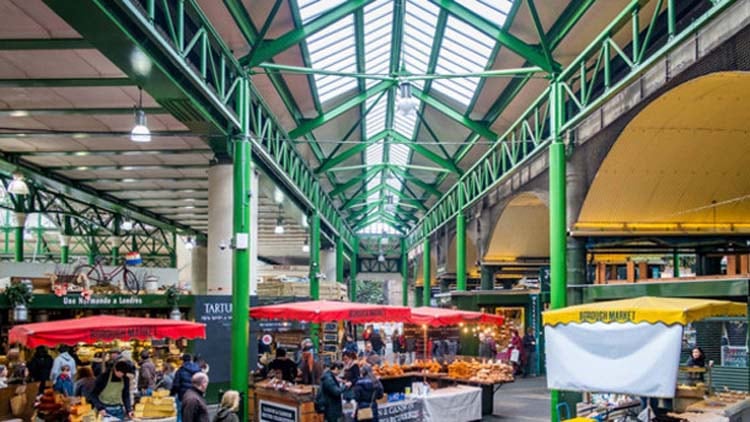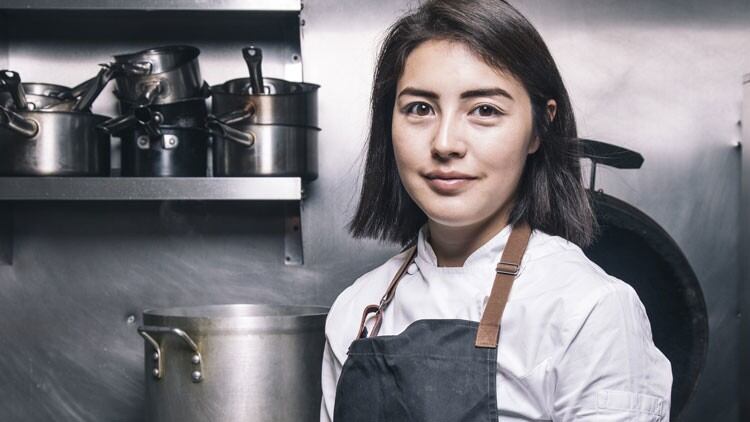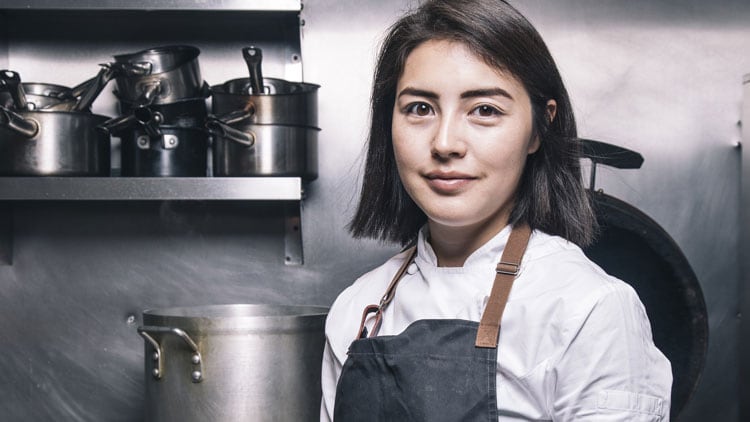"I’ve got a knife,” Elizabeth Haigh reaches into her handbag and pulls out a Chinese cleaver sheathed in cardboard. The object – the result of a collaboration between the Singaporean-born but UK-raised chef and the knife maker Blenheim Forge – is far lighter than its dimensions suggest, with a delicate but undoubtedly lethal matt-finished blade.
It’s been designed with her upcoming Borough Market Hainanese chicken and rice restaurant Mei Mei in mind. “I can get away with quite a thin blade because I won’t be using it to go through bone. In Singapore the dish would be served on the bone but I don’t think that will go over so well in London, although if people want that it can certainly be organised,” says Haigh, who is best known for a brief but distinguished stint at Hackney’s Pidgin during which she attracted a Michelin star (Restaurant also named her Chef to Watch at the National Restaurant Awards 2017).
She is now using the knife to portion up some brightly coloured layered cakes that her parents recently brought back from Singapore. “These are called kuih. They’re made with coconut milk, rice flour and pandan leaves. They’re not as sweet as they look and have a wonderful gelatinous texture.”
Haigh’s cooking has for some time had a pronounced Asian influence, but she will be bringing her Singaporean heritage to the fore at the 12-cover Mei Mei, which is a term of endearment for ‘little sister’ (Haigh is the oldest of three sisters). For this reason the project – which headlines a new development of 24 permanent counter restaurants and food stalls at the famed central London market – is a highly personal one.
“It’s the food that I grew up with. I can make Hainanese chicken and rice in my sleep. For me it’s the ultimate comfort food,” says Haigh in her bright and articulate manner, despite being – by her own admission – a little frazzled by the amount she currently has on her plate: as well as the launch of her debut solo restaurant project later this month she is writing a cookbook that explores her family’s culinary roots, and is also busy with a number of one-off diners and collaborations, including one for British Vogue.
Created by immigrants from Hainan in southern China and now considered to be one of Singapore’s national dishes, the combo of poached chicken and chicken stock-cooked rice is a staple across large swathes of South-East Asia but is not especially well-known in the UK, although Haigh points out that Waitrose recently published a recipe card for the dish to promote its ginger and garlic paste. The expression on her face suggests she does not rate the supermarket’s take on it. Despite this, she is not billing Mei Mei’s as the ultimate authentic version. “There are lots of ways of doing it. This is a version that’s authentic to me and my family.”
Hainanese chicken and other stories
Like the kuih we are currently working our way through, Hainanese chicken and rice is flavoured with pandan, which has a curious vanilla-like flavour. The chicken is stuffed with the pandan leaves, garlic and ginger and poached. The rice is cooked with the stock created by the poaching, along with rendered fat from the chicken and more pandan leaves.
“It’s a dish that appears extremely simple but actually takes a lot of effort to get right,” Haigh tells me, before explaining how she exfoliates the skin to achieve a smooth texture.The chicken will be served cold, the contrast of the cold meat and its gelatinous skin with the steaming hot rice being a key part of the dish’s appeal. The chicken bones will be used to make even more stock, available as an extra to be drunk alongside the chicken and rice. The dish will be served with condiments including garlic chilli sambal, dark sweet soy sauce and ginger and garlic paste.
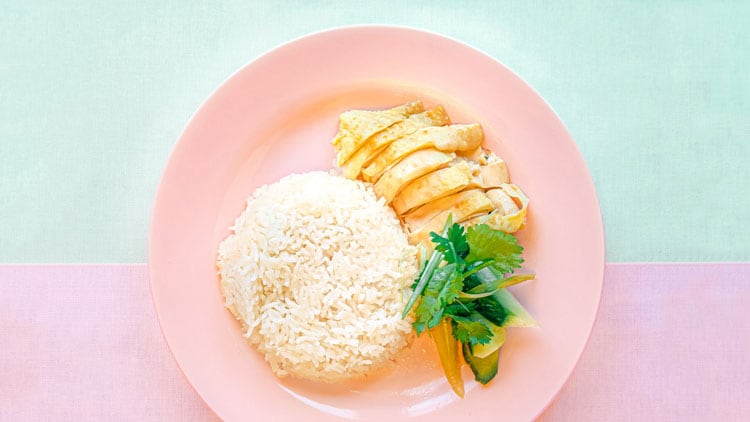
A good quality chicken is crucial for the dish. Mei Mei’s will be sourced from Borough Market butcher The Ginger Pig (all the traders at the new development are obliged to source at least 30% of their produce from the market). After extensive trials, Haigh has settled on 1.8kg to 2kg capons, which have pinker, more gamey meat than their non-neutered counterparts.
“It’s hard to replicate what is used in Singapore. I was looking for the best possible chicken flavour. We tried herb-fed but the herb flavour was too pronounced. We also experimented with The Ginger Pig’s 100-day old chickens, which are bigger than most turkeys. They were delicious but required long braising, so weren’t well-suited to the dish.”
Each chicken will yield six to eight portions. Chicken and rice will cost £8.50 per portion, which is competitive given the quality of the produce involved. “We’re not in this to make tremendous amounts of money,” she insists. “It’s important to me that the produce is good, and that’s important to Borough Market, too.”
Other dishes on Mei Mei’s menu will include ox cheek rendang curry, nasi lemak, and ‘Captain’s Curry’ using the aforementioned 100-day-old chickens.
The restaurant will also be one of a handful of places in London to serve proper Malaysian coffee, made with robusta beans that have been roasted with sugar and butter to lend a rich toffee and chocolate flavour. “Borough Market is not short of great coffee so it made sense to do something different. Singaporeans have a sweet tooth so kopi is traditionally served with condensed milk, but it can also be ordered with evaporated milk, or just served black.” Mei Mei will also serve pulled tea – poured theatrically between two cups to aerate – which is also served very sweet.
East meets west
Haigh’s family came to the UK when she was a toddler. Her mum is from Singapore and would cook Asian food six nights a week but on a Sunday they’d all sit down for a British roast. “My dad is from up north; Yorkshire puddings were important,” she says. “We had an appreciation for both cuisines.”
Despite coming from a family that loved to cook and eat, Haigh didn’t consider working with food a viable vocation. “Let’s be frank, a career in catering isn’t pushed at school. GCSE Food was terrible, it was just cakes and blunt knives. It’s not what kids need. I was steered towards university. I don’t think I even knew it was possible to do a degree in something catering-related.”
Haigh studied architecture at London’s prestigious Central St Martins, but spent more time cooking in her student digs than she did in the studio. While at university she was dared to apply for the 2011 series of MasterChef. She managed to get on the programme but was knocked out fairly early on over a duck dish that was deemed excessively smoky.
Upon completing her undergraduate degree she realised her heart wasn’t in it and that it was time to push the reset button on her career and join a surprisingly long list of people that have swapped designing buildings for designing plates of food (other notable architects-turned-chefs include Fergus Henderson and Dinara Kasko).
“For some time I had known deep down that I wanted to have a career in food, but I guess I didn’t have the guts to make the change. My parents weren’t pleased but they were supportive,” says Haigh, who moved back into the family home, which was – handily – in Maidenhead, within striking distance of a number of well-regarded restaurants and pubs.
“I’m a stubborn person. I get that from my dad. My parents know that if I put my mind to something, I will do it well. They could also see that I was immediately much happier. Central St Martins was competitive and the work was isolating. It wasn’t a great time for me. Kitchens were a total shock to the system, but I loved working in a team.”
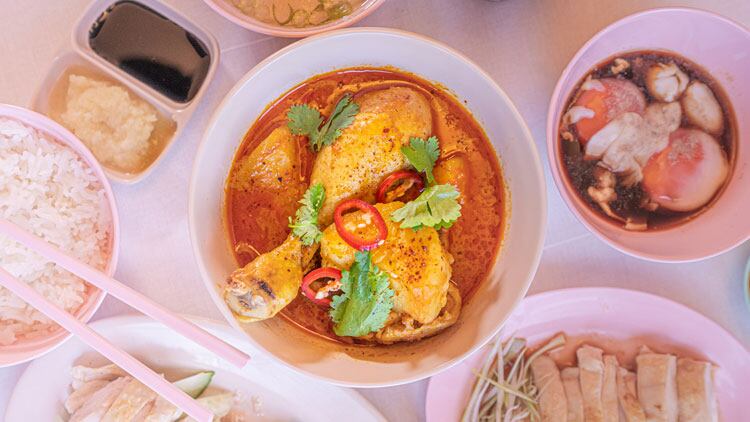
Haigh combined work at a number of gastropubs – most notably the Michelin-starred Royal Oak, then under the auspices of Dominic Chapman – with one day a week at Westminster Kingsway College. Her first London posting was as a chef de partie at James Knappett’s Kitchen Table in Fitzrovia.
Her tone of voice and careful choice of words suggests her time in this now two-Michelin-starred kitchen was not a completely happy one, describing the atmosphere simply as ‘intense’. “It was a different pace to the countryside. The setup [the guests sit at a counter that runs round the kitchen] was intimidating. I could barely pass people their plates because I’m so short. I learnt a lot.”
Needing a break from Michelin-starred dining, Haigh contacted Neil Rankin, who was at the time at Smokehouse in Islington. She told him she’d had enough of the cold section and pastry and he put her on the hot section straight away. Yet Rankin’s biggest appeal was his nose-to-tail cooking approach. “At Michelin places there is a huge amount of waste because everything needs to be neat and consistent.”
It was to be a fairly short break from fine dining. In 2015, now joint head chef at Smokehouse, she was approached by James Ramsden and Sam Herlihy who had been running a successful supper club and had found a bijou space in Hackney for a permanent location. She cooked them breakfast – deep-fried eggs with asparagus and a homemade sambal – and was hired on the spot to deliver their vision of an affordable yet creatively intensive restaurant where the kitchen rips up the fixed menu and starts again every single week.
Pidgin was critically well received, bagging positive reviews from Marina O’Loughlin, then at The Guardian, and Giles Coren of The Times. With its out-of-the way location and tightly proportioned dining room it was not an obvious candidate for Michelin recognition, nevertheless the restaurant picked up a star in 2016. “The star was a surprise, although we were aware the Michelin inspectors had been in a few times: not many people wear suits in Hackney,” says Haigh. “It wasn’t something we had been working towards but we were trying to make our guests happy by delivering a great and consistent quality of cooking.”
By the time the star was announced, however, she had moved on again, this time to focus on her first solo project.
That project is Kaizen House, which Haigh runs with husband Steele. Named after the Japanese philosophy of continuous improvement, it’s best described as an overarching brand that encompasses all of the couple’s projects to date, which include a well-populated YouTube channel that has an eclectic selection of recipes (red braised pork belly, moules mariniére), some consultancy work, and a number of pop-ups and residencies.
Creating a brand
“Food and cooking is not just about being in a restaurant. It’s about experiences and community too. Starting a restaurant group wasn’t enough,” says Haigh, who credits Steele – who works in advertising – as being the strategist behind the project.
Kaizen House’s most recent residency was at Fitzrovia private members’ club Mortimer House. Fully open to the public, the 24-cover restaurant operated for two months and served the likes of a beef rendang bun served with fermented sambal and buttermilk-fried chicken and caviar katsu sando.
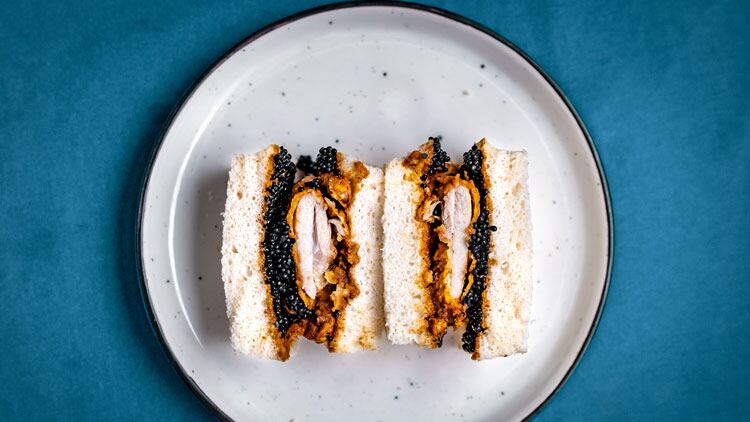
It’s a hint of what to expect when Haigh finally launches Shibui, her flagship restaurant concept that has been in the offing since she left Pidgin way back in 2016. Private backing is semi in place for the restaurant – which will serve seasonal produce with Asian influences cooked over fire – but the uncertainty created by Brexit and difficulties acquiring a suitable site has seen the project be put on hold.
“We’ve found sites that would have been perfect for Shibui but the price wasn’t. We’re not in this to make serious money but it was too much of a risk. Mei Mei was a great opportunity because it hasn’t required a big investment. It’s also good to start with a business that’s a bit simpler operationally.” If Mei Mei is a success, she will likely open more, she says.
The Modern Chef
Soon after starting out in kitchens Haigh created a blog called The Modern Chef which documented her projects and dishes alongside her frustrations with being a trainee chef (The Modern Chef is now her Twitter and Instagram handle). It is an apt monicker for a chef who has become increasingly outspoken about an industry that needs to modernise and become more inclusive.
Early this year, she presented a Radio 4 programme called Chefs and #MeToo that used the revelations about a number of high-profile chefs, including Dan Doherty, as a jumping off point to explore problems in kitchens, including sexual harassment, bullying and toxic masculinity. Though she did not name names, she highlighted a number of incidents in her career including one where she was scalded with hot oil when another chef lost his temper and threw a pan.
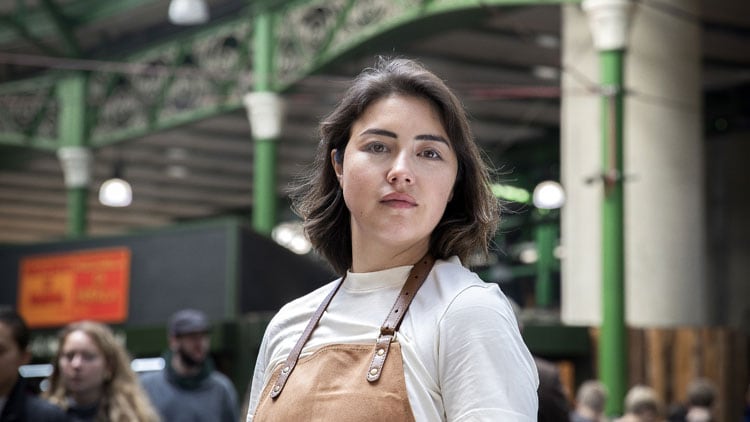
Haigh is understandably cautious when discussing the programme. “I find it frustrating when people focus on the negatives. I don’t want to be the person who is always moaning. I want to lift the industry up. I do believe that things are getting better. The main reason I did that programme is that I wanted people to know I’d been through all that and come out the other side OK. I’m fortunate to be in a position where I can get exposure.”
She is more candid when asked for her view on the outmoded comments made about women in professional kitchens from the likes of Heston Blumenthal and Marco Pierre White. In fact, her immediate response is to bang her head on the table. “Have you got a big pot for me to try and lift?” she says, dryly referencing both chef’s pronouncement that women struggle to lift heavy pans. “It’s so backwards. It’s especially disappointing that this is coming from people I have looked up to throughout my career. In fact, I idolised them.”
Would it be refreshing to do an interview and not be asked to talk about gender? “It depends on the question. The one question that really winds me up is ‘what’s it like to be a female in the kitchen’. I’ve never been a male chef so I don’t know. But I can see that men and women get treated differently. We need to talk about inequality. There still needs to be equal pay across all industries. By talking about these issues we are pushing to make things better.”
Determined is the principle adjective that comes to mind when describing Haigh. There’s been an awkward gap between her time at Pidgin and the launch of her flagship and a lesser chef could have easily lost momentum. But Haigh has managed to stay on people’s radars, carving out a niche with her Kaizen House brand and with Mei Mei set to build anticipation for a permanent iteration of Shibui. She may describe herself as a “tiny chef”, but she cuts an unstoppable figure as she moves on – cleaver in bag – to her next meeting.
This is a web version of an article that first appeared in the November issue of Restaurant magazine, the leading title for the UK's restaurant industry. For more features, comment, interviews and in-depth analysis of the restaurant sector subscribe to Restaurant magazine here.


